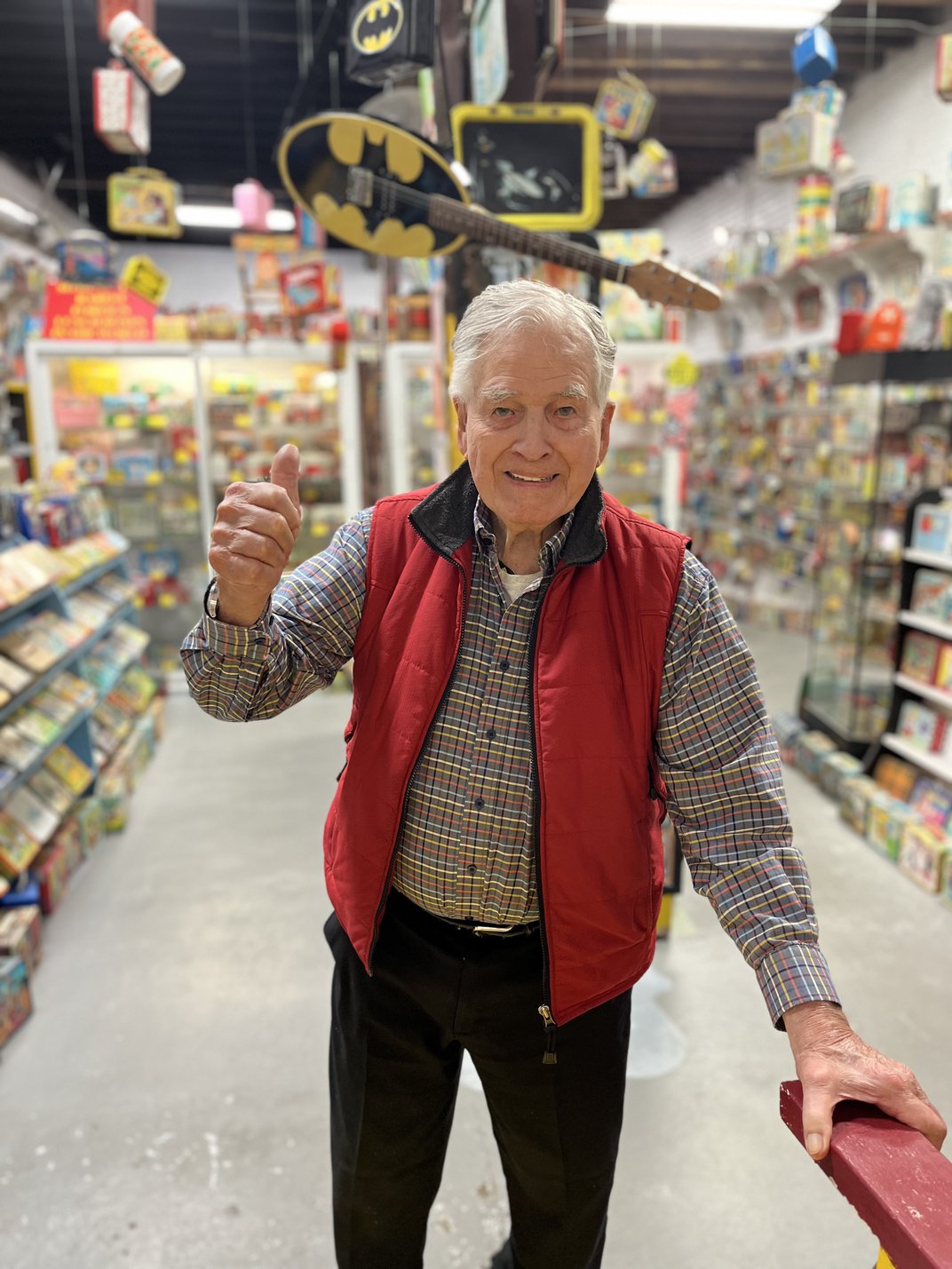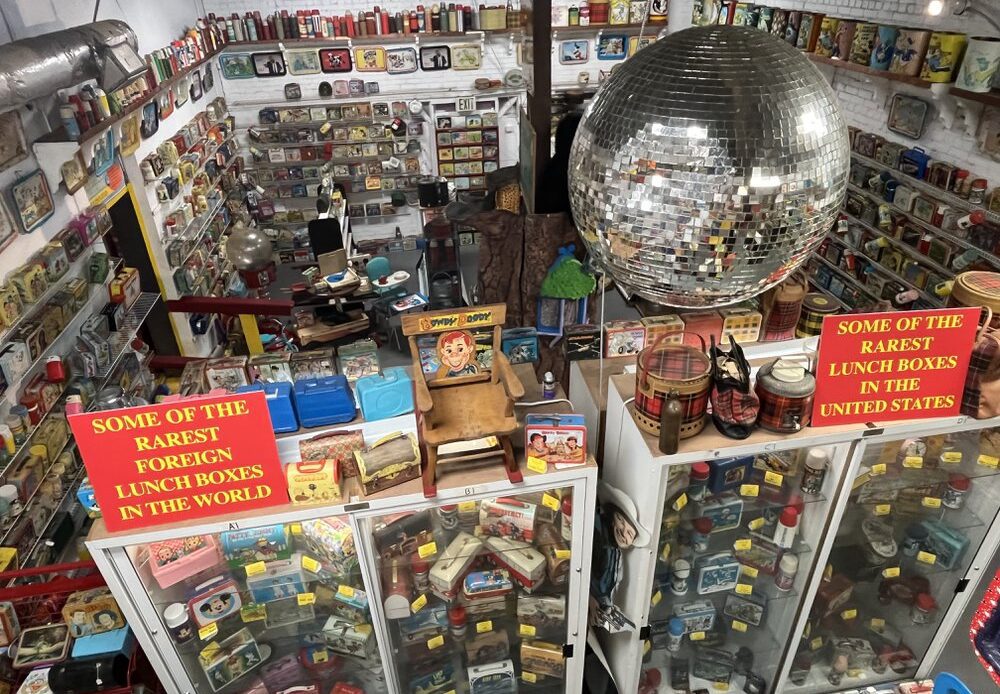More than 3,000 lunchboxes are on display inside the World’s Largest Lunchbox Museum.
Kaitlynn Etheridge
Allen Woodall’s Lunchbox Museum in Columbus, Georgia, is organized for adventure, not that one could tell at first blush. More than 3,000 lunchboxes and 1,000 thermoses sit on floor-to-ceiling shelves that line the walls. Others hang from the ceiling.
“I’m not going to say there’s no order here, because there’s an order,” says Kaitlynn Etheridge, a curator and marketing director for the museum—and Woodall’s granddaughter. “It’s just our kind of order.”
The 33-year-old museum houses one of the most extensive collections of the items in the world. “We have most every lunchbox there is available, even international ones,” Etheridge, 36, says.
Some loose themes can be discerned in the madness. Six cases in the center of the museum hold notable lunchboxes, including extremely rare items, like a 1957 offering featuring Toppie the Top Value Elephant. For those not familiar (which I suspect is many), Toppie was a mascot for supermarket chain Kroger’s value stamp program. In 2021, a Toppie lunchbox sold at auction for more than $3,500. But for the most part, rather than grouping the collection by date or material, the museum encourages “the hunt,” Etheridge says.
Allen Woodall is the founder and curator of the Lunchbox Museum, which is part of Columbus Collective Museums. Kaitlynn Etheridge
The collection began on a whim, when Woodall, then the owner of a radio station in Columbus, bought two vintage lunchboxes at an Atlanta antiques show in 1985. One was Green Hornet-themed; the other sported Dick Tracy on the front.
“It immediately flashed back memories in my mind of when I was 10 years old, in my grandparents’ home up in Social Circle, Georgia, laying on the living room floor and listening to Dick Tracy on the radio and the Green Hornet,” Woodall, 88, says.
It’s this same nostalgia that Woodall hopes to spark in the museum’s visitors. And if it’s any measure of his success, he says, they are often visibly moved when they find themselves face to face with an artifact from their school days. And, thanks to the hands-on nature of the museum, they’re even free to hold it for a picture or snap it open.
“I’ve been…
Click Here to Read the Full Original Article at Travel | smithsonianmag.com…
